Throughout history, city walls have played a significant role in the defense and development of urban areas across Europe. These imposing structures were meant to provide protection against external threats, aid in controlling the movement of people and goods, and eventually come to symbolize the might and prestige of the cities they encircled. In this blog post, we’ll talk about 21 of the most beautiful walled towns and cities in Spain that should be on every traveler’s itinerary.
A Brief History of Urban Walls on the Iberian Peninsula
In antiquity, city walls were typically constructed using earthworks, wood, and stone. They were essential for defending cities against raids and invasions by hostile neighboring forces. The Roman Empire, for example, established many walled cities in Spain, such as Lugo and Tarragona. These walls were crucial to their strategy for dominating the Iberian Peninsula.
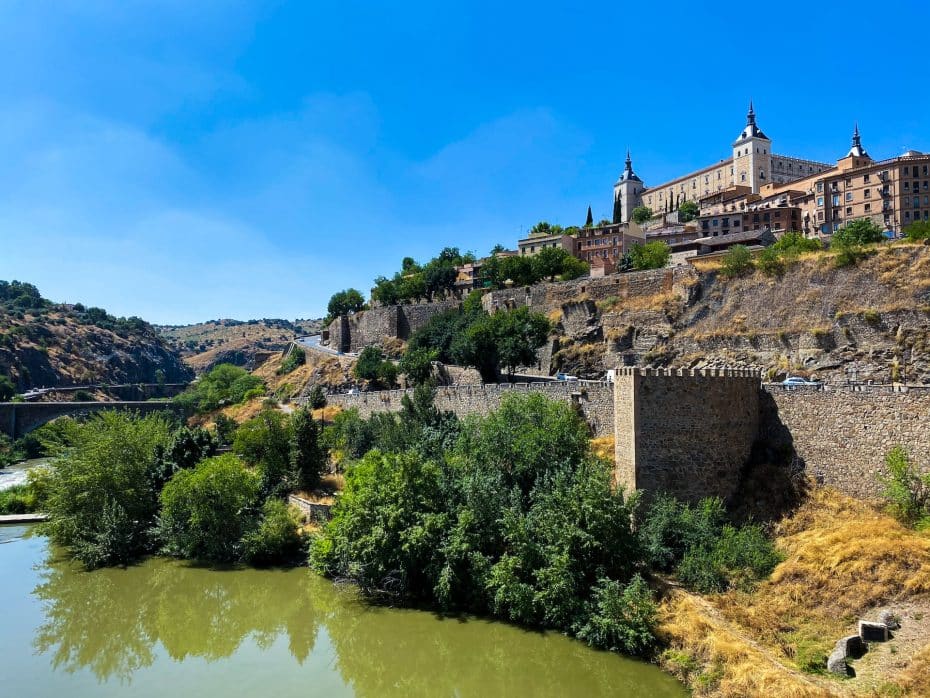
That said, it was during Medieval times that city walls experienced a gold age. Medieval city walls represented an evolution from their ancient counterparts. As the population of ancient cities expanded, new and more sophisticated defenses were needed. The construction techniques improved over time; for example, walls got gradually taller and thicker. One important innovation was the development of castles – fortified structures that often had moats as additional layers of protection. The Alhambra in Granada and Avila‘s Walls are famous examples of medieval walled cities in Spain.
During Spanish colonization, the concept of building walled cities was exported to other territories, such as the Canary Islands and the Americas. A notable example is the coastal fortress of Cartagena de Indias in present-day Colombia.
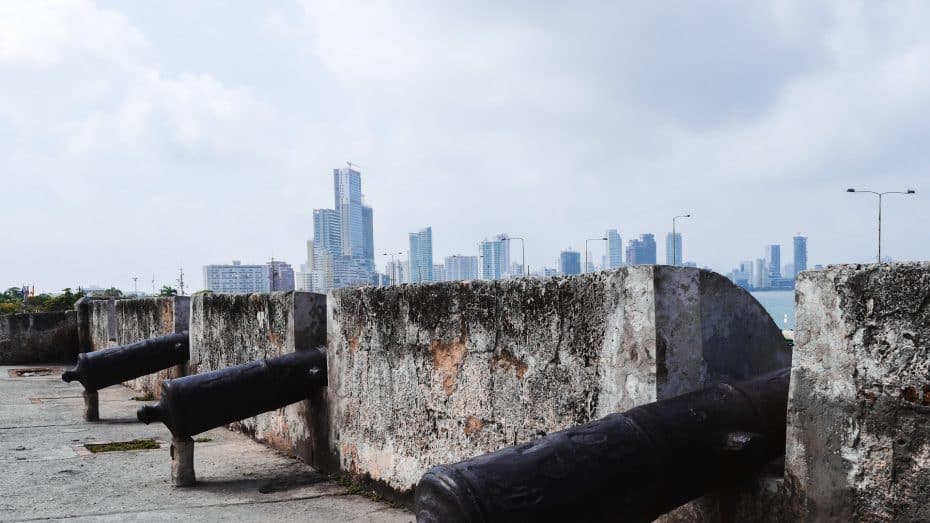
However, as time progressed, city walls began to lose effectiveness due to advances in military technology, such as gunpowder and artillery. These innovations made it easier for besieging armies to break through or destroy even the most formidable barriers. As a result, many medieval cities demolished their walls either partially or completely to enable further expansion or adapt to new defensive strategies. In Spain, examples include Madrid and Barcelona, where significant portions of their city walls were demolished.
Despite their obsolescence, some final attempts at constructing walled cities persisted in Spain. For instance, in the 18th century, Pamplona rebuilt its city walls in response to military threats. Ultimately, their utility waned further as modern warfare advanced significantly beyond these now-outdated fortifications.
The Most Beautiful Walled Cities in Spain
1. Ávila
Castilla y León
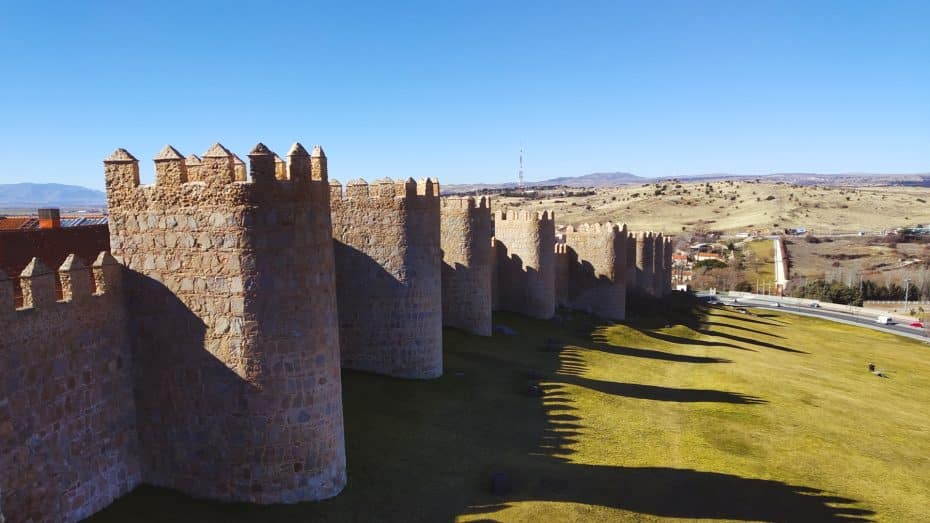
Originally founded by the ancient Celtiberians and later occupied by the Romans. Ávila’s formidable and well-preserved city wall was constructed in the 11th and 12th centuries under the reign of King Alfonso VI to protect Ávila from potential enemies. The wall is approximately 2.5 kilometers (1.5 mi) long with nine gates, over 80 semi-circular towers, and crenelated parapets. Built mainly with granite, abundant in the region, the walls are an impressive engineering and architectural feat of medieval Europe.
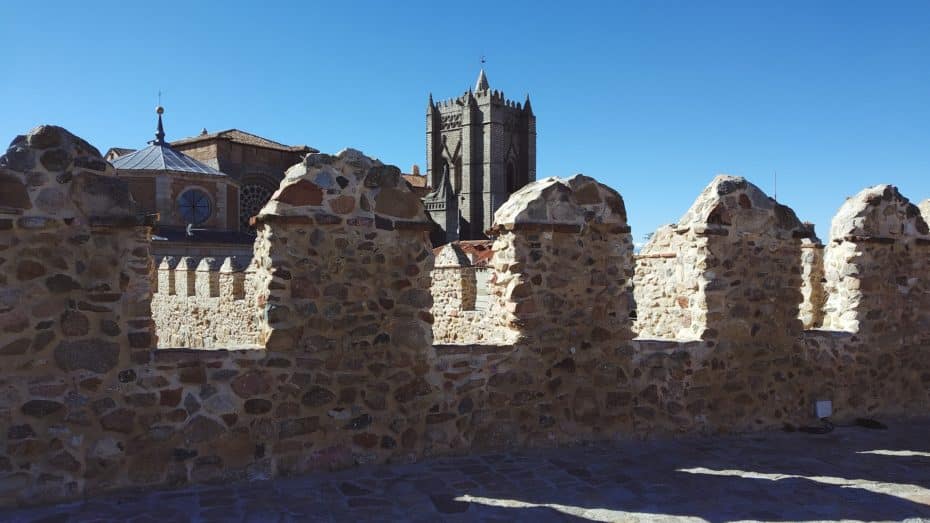
While the town is mostly renowned for its ancient walls, It is home to several other landmarks, such as the 12th-century Cathedral of Ávila and the Basilica de San Vicente, from the same period. Another noteworthy site is the Convent of Santa Teresa, built in 1636 on the birthplace of Saint Teresa of Ávila, a crucial figure in Catholic reform during the 16th century.
Reaching Ávila by public transportation is straightforward, as regular train and bus services connect it with major Spanish cities such as Madrid. From Madrid’s Chamartín train station, it takes approximately 1 hour and 30 minutes by train on the Avant line. Alternatively, buses operated by ALSA or Avanza leave from Madrid’s Estación Sur bus station and take between 1 hour and 30 minutes to 2 hours.
In case you missed it…
2. Girona
Catalonia
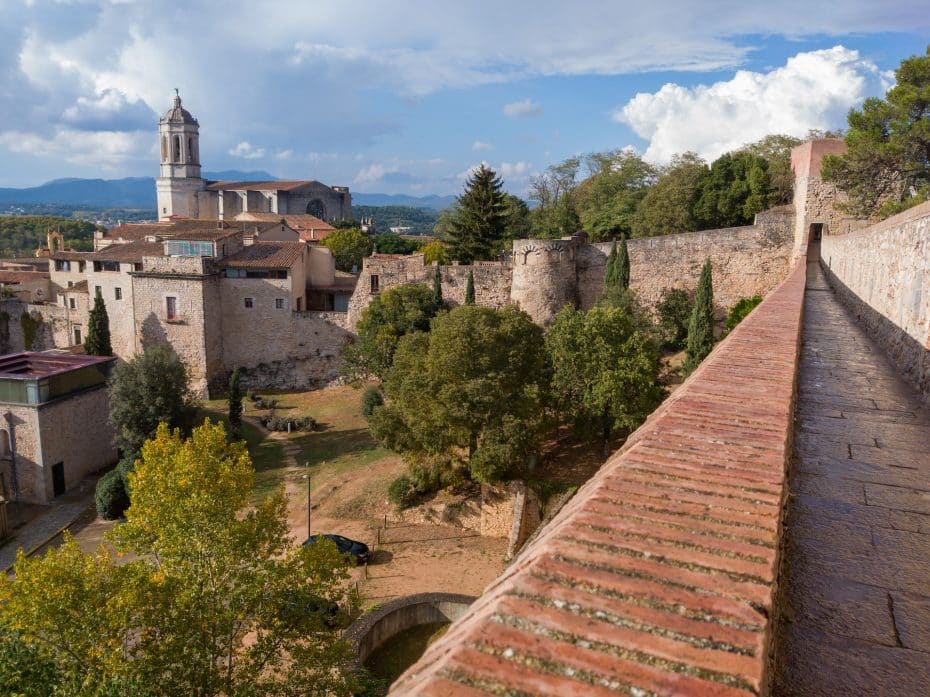
Situated in the northeastern region of Catalonia, Girona is a historic city with origins dating back to the Iberian period. Its city walls were originally constructed during the Roman era in the 1st century BC and later expanded by the Moors and Christians in subsequent centuries. In particular, significant extensions were made between the 9th and 15th centuries to create a defensive perimeter.
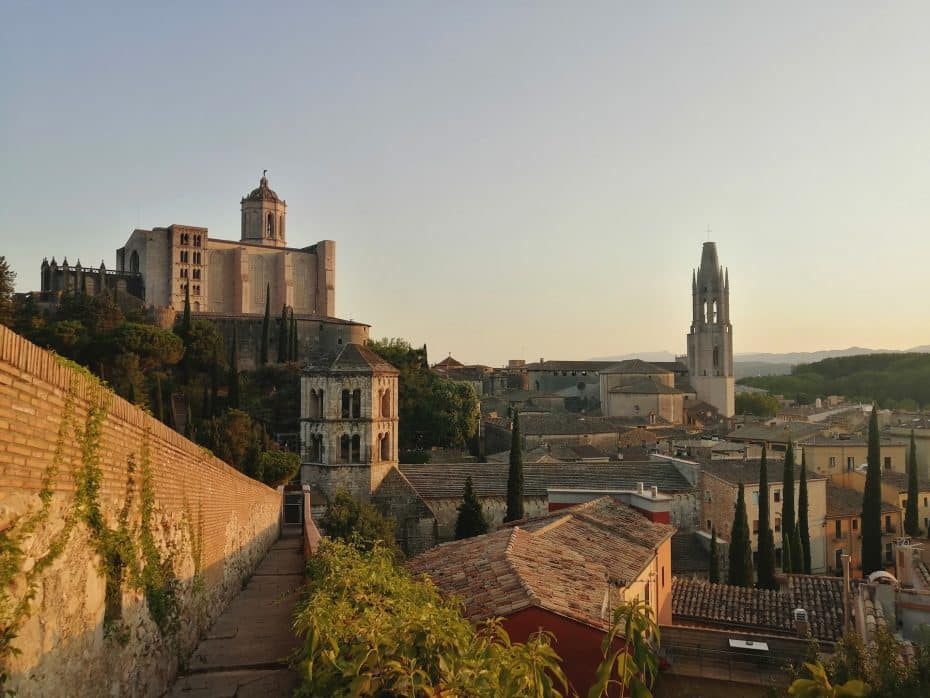
Girona’s fame extends beyond its city walls, with several other culturally important attractions built around the same period. The Girona Cathedral, for example, began construction in the 11th century and underwent several architectural transitions before being completed in the 18th century. Meanwhile, the Arab Baths are a well-preserved complex representative of 12th-century Moorish architecture. Additionally, the Monastery of Sant Pere de Galligants serves as an exquisite example of Catalan Romanesque architecture. These sites, together with Girona’s picturesque old town and fascinating Jewish quarter (El Call) make it an ideal destination.
Girona is well-connected by train and bus. The high-speed AVE train connects Girona directly to major cities such as Barcelona (approximately 40 minutes) and Madrid (approximately 3 hours). Additionally, regional trains operate regular services between nearby towns and cities.
In case you missed it…
3. Cáceres
Extremadura
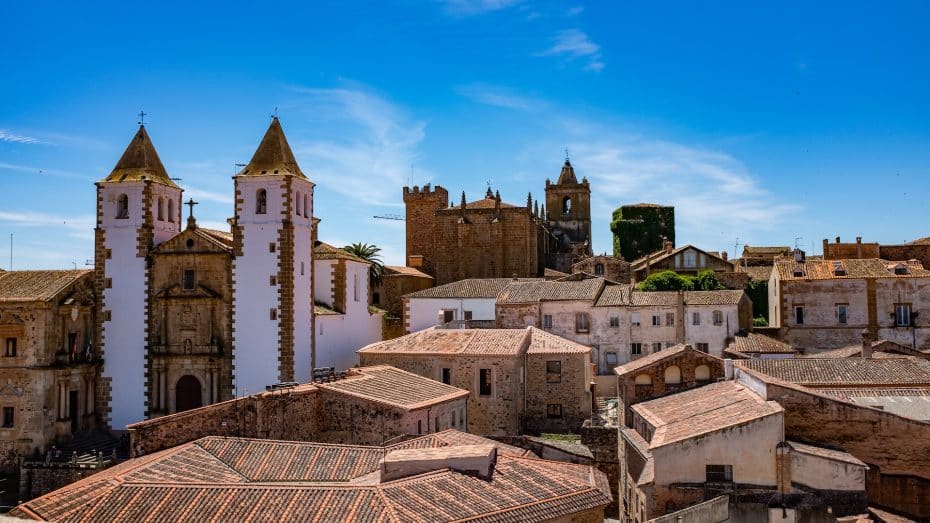
Cáceres originated in ancient pre-Roman times. The construction of its city wall dates back to the mid-3rd century. Throughout its history, this city underwent numerous enhancements, including the addition of watchtowers during the Visigothic period and reinforcement during the Arab occupation in Spain. Specifically, the remarkable walled enclosure of Cáceres is two kilometers long and boasts thirty towers, five gates, and several “postigos” (smaller secondary gates).
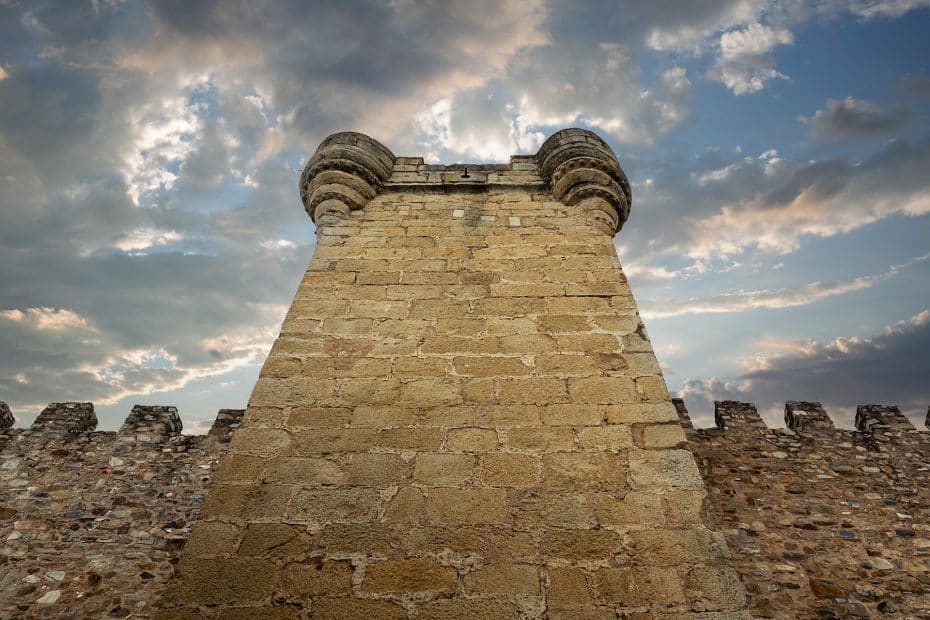
Apart from its walled city, Cáceres is renowned for various historical landmarks, earning it its status as a UNESCO World Heritage Site. These include the Santa Maria Cathedral, Bujaco Tower, and Arco de la Estrella.
Cáceres is connected to Madrid and Badajoz by train services operated by Renfe. Alternatively, bus transportation is available through ALSA and Avanza companies.
In case you missed it…
4. Segovia
Castilla y León
Located in Castilla y León, Segovia traces its origins to Celtic times and later became an important Roman stronghold. Its ancient city walls have been fairly well preserved throughout history, featuring stretches like Casa de los Picos and the Alcázar. At its prime, the wall comprised five gates, including the famed Puerta de Santiago and San Andrés gates, as well as the San Andrés Excubitorium tower.
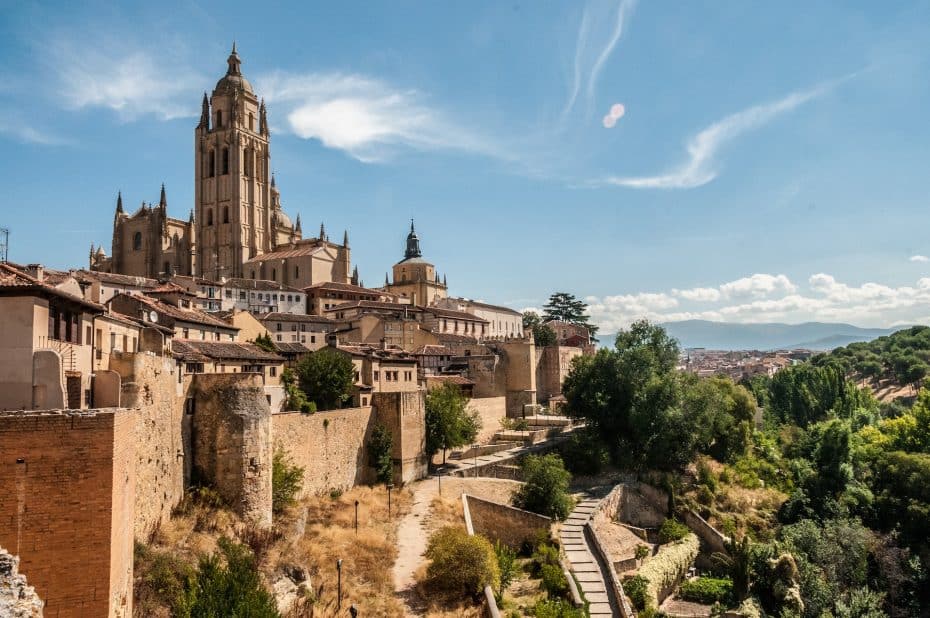
Segovia is renowned for other architectural marvels in addition to its city walls. The Roman Aqueduct of Segovia, dating back to the first century CE, stands as an awe-inspiring feat of engineering. The iconic Alcázar of Segovia is a 12th-century fortress and former royal palace that inspired Walt Disney’s Cinderella Castle. The magnificent Segovia Cathedral is an excellent example of late Gothic architecture.
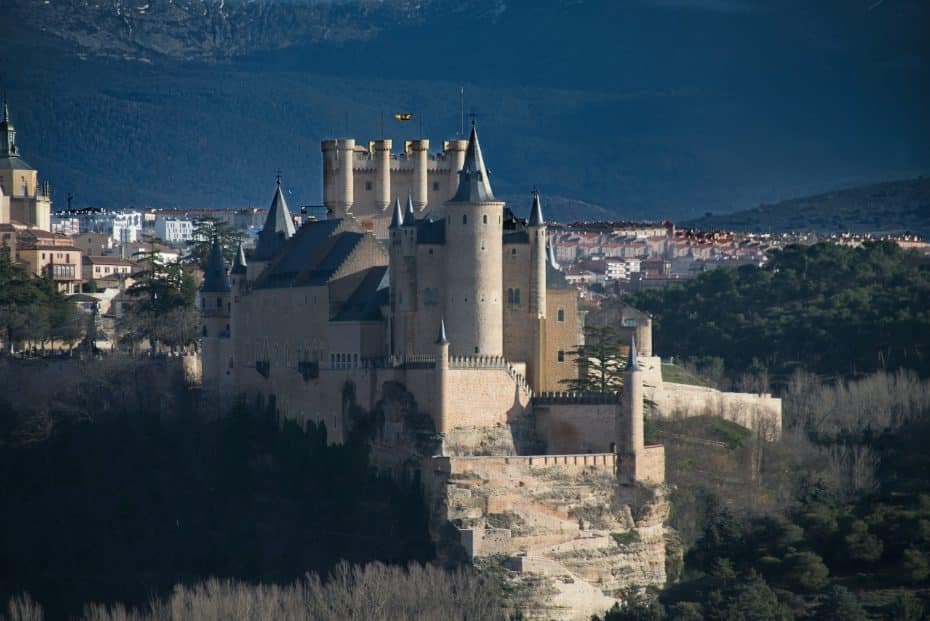
Reaching Segovia by public transportation is easy. Trains from Madrid-Chamartín can be as short as 27 minutes via RENFE’s high-speed AVE trains or around two hours on slower regional trains.
In case you missed it…
5. Carmona
Seville, Andalusia
Carmona, situated in the southern region of Andalusia, is one of Spain’s most picturesque walled cities. The origins of this historic city can be traced back to pre-Roman times, with the construction of its impressive city wall beginning during the Almohad period in the 12th century. Over time, several changes and additions were made to the wall, adapting it to different architectural styles. Carmona’s walls have been incredibly well-preserved thanks to ongoing conservation efforts. Among the wall’s highlights are Puerta de Sevilla, a prominent gate boasting a horseshoe arch, and Puerta de Córdoba, a Roman gate built in the 1st century AD. Both provide stellar lookout points, offering panoramic views of the surrounding countryside.
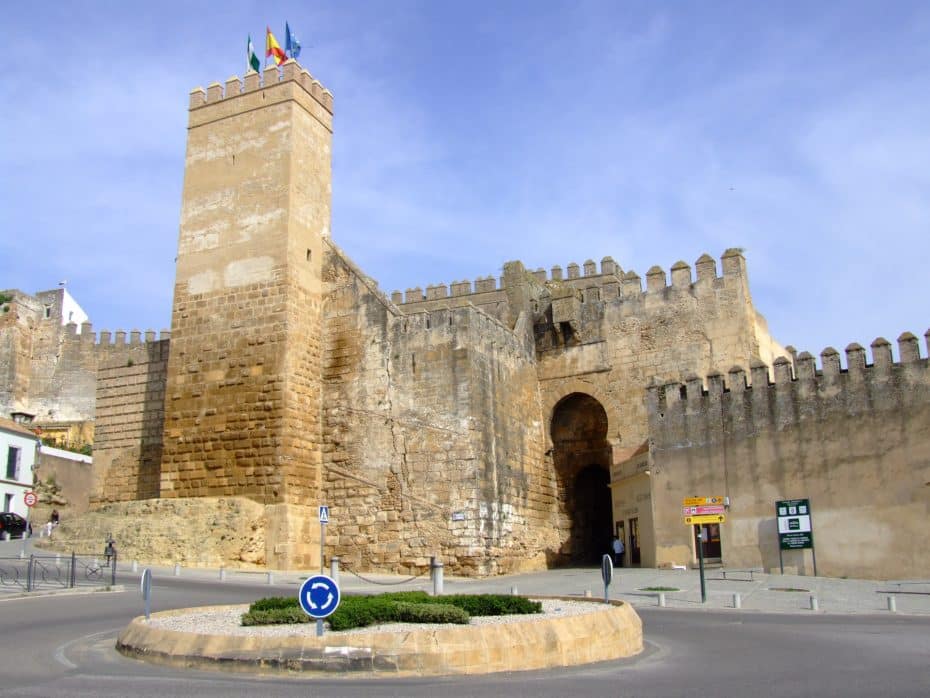
Carmona is home to historic architecture and well-preserved monuments. Among them is Alcázar del Rey Don Pedro, a majestic fortified palace constructed in the 14th century; it later became a Parador hotel. Another remarkable site is Iglesia de Santa Maria la Mayor – an imposing 15th-century Gothic Mudéjar church with awe-inspiring façades and interiors. The city also boasts numerous monuments dating back to Roman times.
6. Lugo
Galicia
Lugo, in the northwestern region of Galicia, is notable for its well-preserved Roman walls dating back to the 3rd century CE. Original construction took place under the rule of Emperor Augustus, and other Roman emperors made later improvements. The entire wall stretches for approximately 2.117 meters (1.3 miles), making it the longest Roman wall still standing today. The structure is characterized by its 85 semi-circular towers, ten gates, and lookouts offering an impressive vantage point for observing the surrounding area.
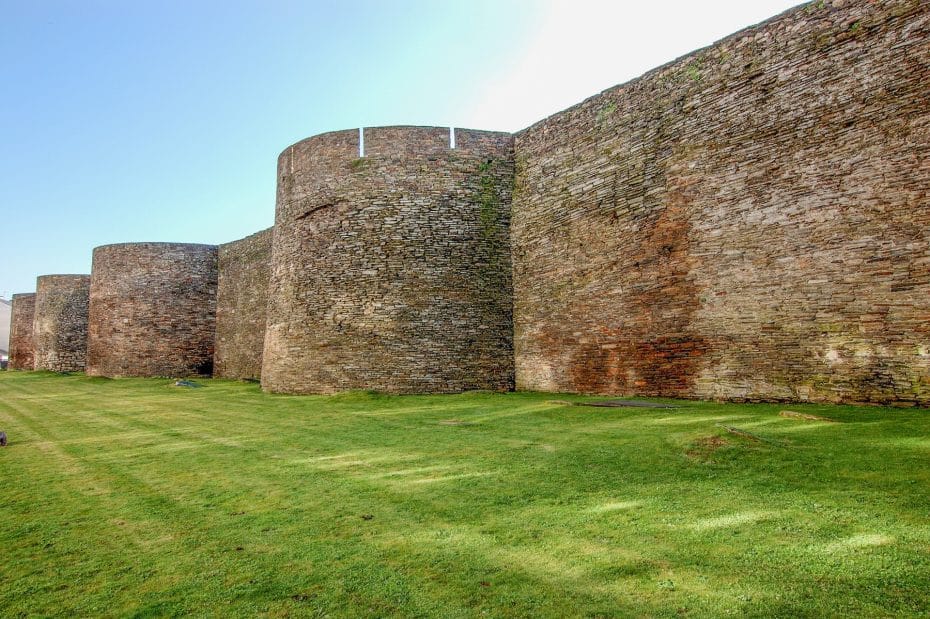
The city of Lugo is renowned for its ancient walls and other historical attractions, including the Lugo Cathedral, built in the 12th century and showcasing a mixture of architectural styles such as Romanesque, Gothic, Baroque, and Neoclassical. Additionally, visitors can explore the ancient Roman baths and the vestiges of a Roman bridge that spans the River Miño.
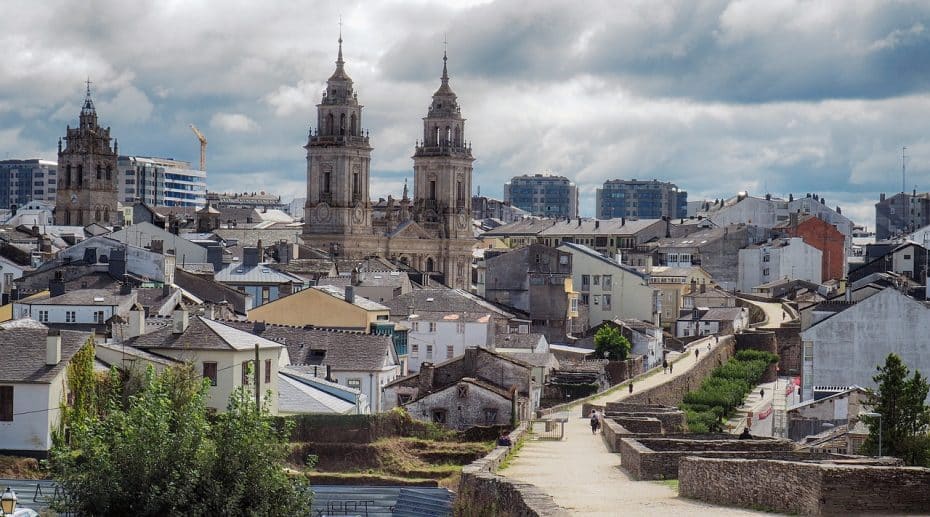
Reaching Lugo is relatively straightforward. By train, travelers can use the Alvia high-speed service from Madrid, Santiago de Compostela, or A Coruña. Alternatively, regular bus services connect Lugo with other Galician cities, as well as Asturias, Castile, and Madrid.
In case you missed it…
7. Albarracín
Teruel, Aragon
Albarracín is a picturesque walled town in the province of Teruel in Spain. The origins of this settlement date back to the 10th century when the Moorish Berber dynasty of the Banu Razin founded it. Albarracín’s city wall, known as “Murallas de Albarracín,” was built during the same period and is remarkably well preserved. The wall is made up of three distinct areas: the Andador del Río Guadalaviar, which stretches along the river and contains six towers; the Castle of Albarracín, a fortress that once housed royalty; and the neighborhood walls, which encircle and protect various parts of the city.
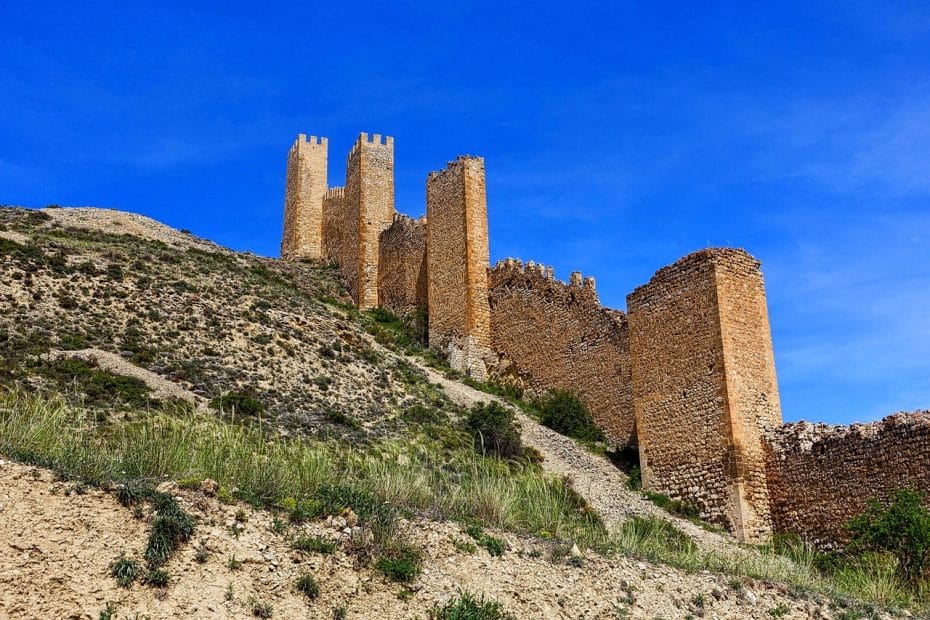
The city is also famous for other historical attractions like the Torre del Andador, a watchtower, the Alcázar de Albarracín, a Moorish castle strategically positioned upon a rocky hill overlooking the town. Additionally, Albarracín boasts beautifully preserved medieval architecture and narrow cobblestone streets. Visitors are drawn to these features as well as other attractions such as El Salvador Cathedral and Diocesan Museum, which display priceless artifacts of local history.
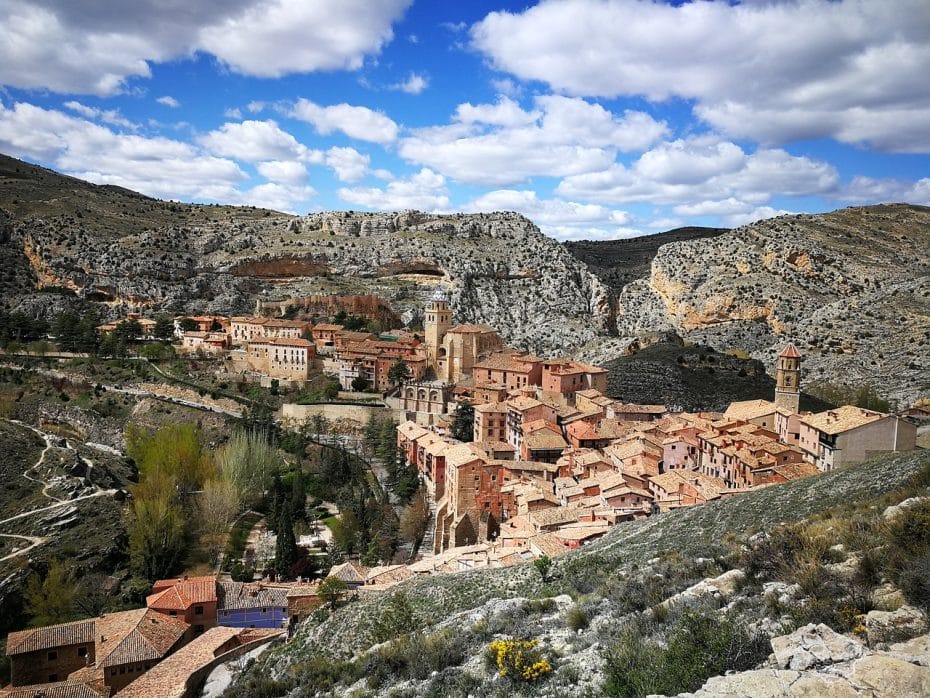
While there are no direct trains to Albarracín, visitors can travel by train to nearby Teruel – approximately 35 kilometers away – and then take a bus to reach it.
In case you missed it…
8. Peñíscola
Castellón, Valencian Community
Peñíscola, situated in the province of Castellón on Spain’s eastern coast, finds its origins in the Iberian and Roman settlements that predate its city walls. Constructed in the 14th century under the orders of Templar knights, the ancient walls continue to harbor parts of this stunning city today. The walls’ conservation is exemplary and features four gates – Portal Fosc, Portal de Sant Pere, Portal de Santa Maria, and Portal de l’Estampa – which serve as entrances into the old town. Notable aspects of the wall include Torreón del Papa Luna, a fortified tower that houses a museum, as well as various lookouts that overlook the Mediterranean Sea.
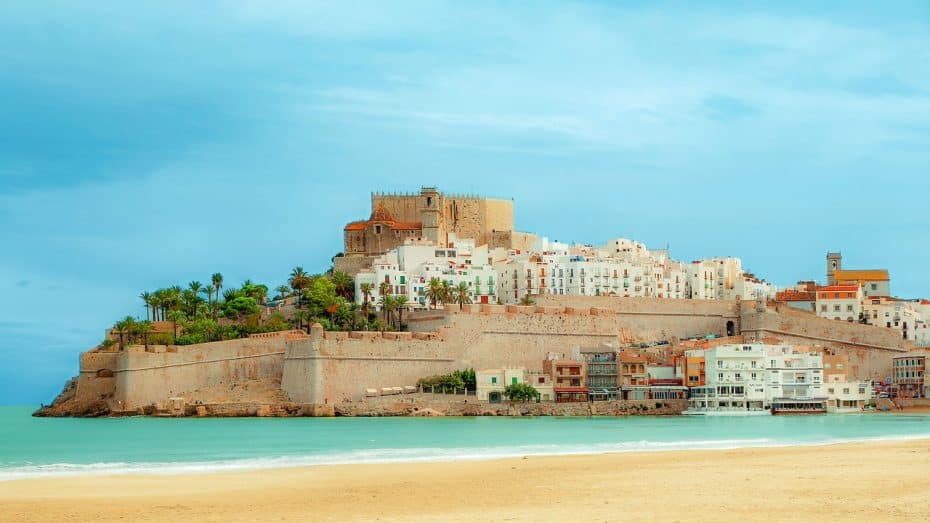
Built between 1294 and 1307 atop a rocky outcrop, Papa Luna was later refurbished by Pope Benedict XIII during his residency. The castle is one of many significant structures constructed during this time period. Besides the iconic castle, other remarkable attractions include La Bufadora – a unique cave with water features – and preserved narrow streets filled with historical buildings worth exploring.
To access Peñíscola via public transportation, travelers must first get to nearby Benicarló-Peñíscola railway station. This station extends connections to major cities such as Madrid, Barcelona, or Valencia through Spain’s high-speed train service AVE or regional trains.
In case you missed it…
9. Besalú
Girona, Catalonia
Besalú, a picturesque town in the province of Girona, was founded in the 10th century. It is renowned for its well-preserved city walls built during the Middle Ages and Romanesque-style gates. The Fluvia River features seven lookouts that offer stunning panoramic views.
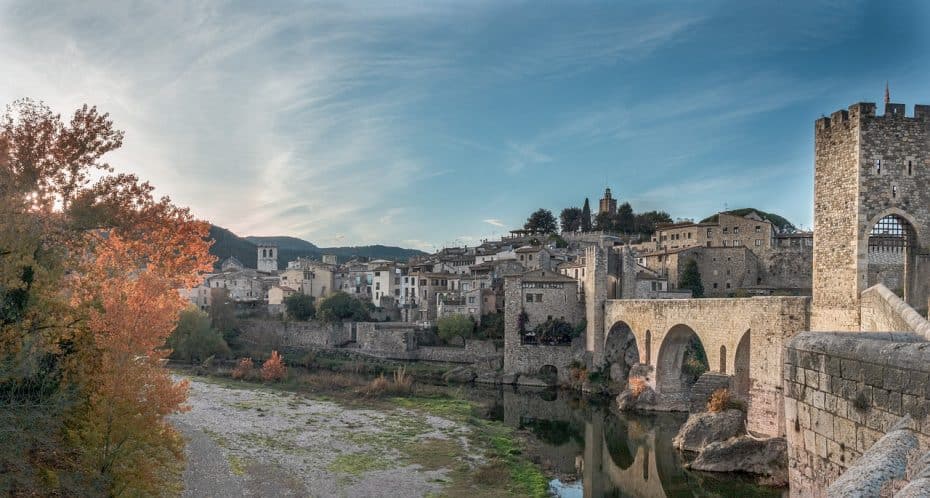
Besalú’s other attractions include a 12th-century Romanesque bridge across the Fluvia River. Elsewhere in town, noteworthy buildings include the Church of Sant Vicenç, built in the 10th century, and the Monastery of Sant Pere de Besalú, completed in 1003.
Although there is no direct train service to the town, travelers can first arrive at Girona via a high-speed train (AVE) from Barcelona Sants Station or regional trains. From Girona, bus connections operated by TEISA can be used to reach Besalú.
10. Ronda
Málaga, Andalusia
Ronda is one of Spain’s oldest and most beautiful walled cities. Founded by the Celts in the 6th century BCE, Ronda boasts an impressive city wall built during the Almohad dynasty’s reign in the 12th century. The wall was reinforced and extended as Ronda changed hands between Christian and Muslim rulers. Today, visitors can admire the well-preserved walls that encircle the old city. Notable features include the Almocabar Gate, which dates back to the 13th century, the Jardines de Cuenca lookout point, and the Puerta de Carlos V gate, constructed in 1522.
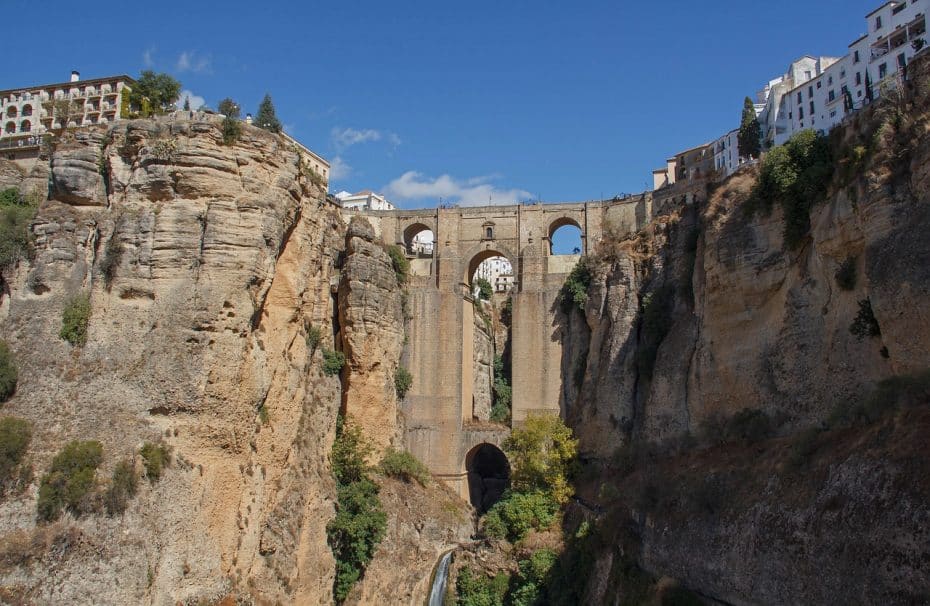
Apart from its ancient city walls, Ronda is renowned for its spectacular Puente Nuevo (New Bridge), which was completed in 1793. Spanning the El Tajo gorge, this awe-inspiring bridge connects the old Moorish town with the newer parts of Ronda. Other notable attractions within Ronda include the Mondragón Palace, a 14th-century palace showcasing Islamic, Gothic, and Renaissance architectural styles, and the Plaza de Toros de Ronda, Spain’s oldest bullfighting ring.
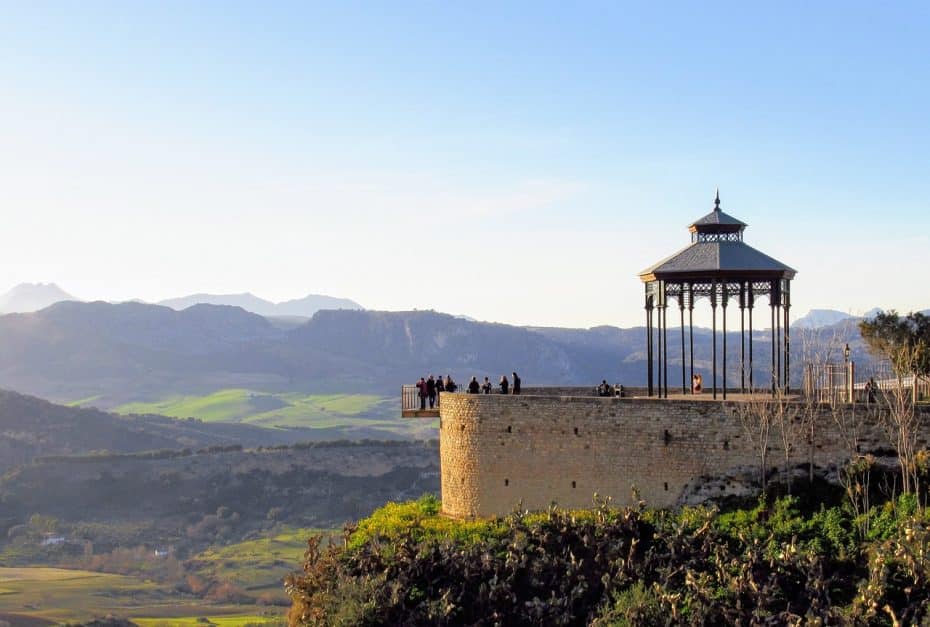
Ronda is reachable by train from Málaga through several regional train services.
11. Aínsa
Huesca, Aragon
Located in Aragon, Aínsa is a walled town with origins dating back to the 11th century. The city wall was constructed during the time of King Sancho Ramírez to protect this strategically important site. Aínsa’s wall is remarkably well-preserved, with features such as three gates: La Puerta de San Pedro, La Puerta de la Cárcel y la Fuente, and La Puerta de Daroca.
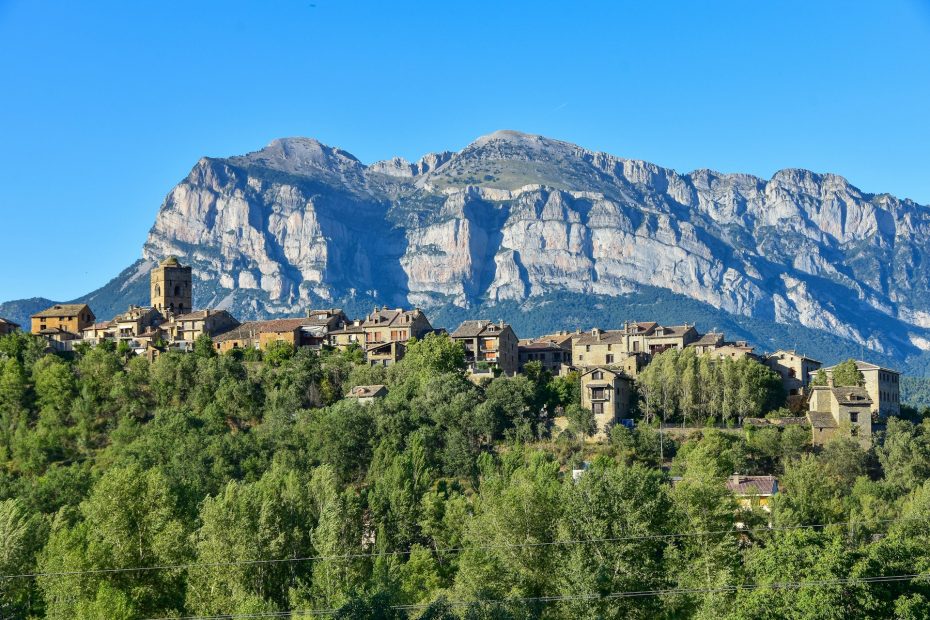
Aínsa is especially renowned for its medieval architecture and medieval monuments. One of the most notable attractions in Aínsa is the Castle of Aínsa, which features a massive keep known as “El Torreón” and offers an incredible vantage point overlooking the town. Another attraction worth visiting is the Church of Santa María, a 12th-century Romanesque church displaying beautiful artwork. Apart from these historical sites, Aínsa’s picturesque squares and narrow streets make it an appealing destination for history and culture.
Reaching Aínsa by public transportation is straightforward, thanks to its connectivity via train and bus services. Visitors can take a train from major cities like Barcelona or Zaragoza to the nearby town of Huesca. Upon arrival at Huesca, frequent bus services are available to Aínsa.
In case you missed it…
12. Pedraza
Segovia, Castilla y León
Pedraza, situated in the province of Segovia, is a picturesque walled town dating back to the 11th century. Its city wall, constructed in medieval times, has been well-preserved throughout the centuries. Key features of the wall include the Puerta de la Villa – its main entrance – and the multiple lookout points that offer panoramic views of the surrounding countryside. Pedraza’s wall is characterized by its robustness and strategically placed towers.

The city’s fame largely owes to its rich history and well-preserved medieval architecture. One notable attraction is the Castle of Pedraza, a 13th-century fortress withstood numerous conflicts. Other historical landmarks include the Parish Church of San Juan, a prime example of Romanesque and Gothic architecture built in the 12th century. Pedraza also gained attention recently due to HBO’s 2020 mystery thriller series “30 Coins“, which was partially filmed in the city.
To reach Pedraza by public transportation, you can board a train from Madrid Chamartín station bound for Sepúlveda, where public buses connect to Pedraza.
13. Chinchón
Community of Madrid
Located some 50 kilometers (30 mi) south of Madrid, Chinchón is a picturesque walled town that dates back to the Middle Ages. The settlement was founded during the Roman period but gained importance under the Moorish rule. Its city wall, originally built in the 11th century and reconstructed over decades, allows visitors to appreciate the medieval town’s historical value. Remarkably well-preserved, Chinchón’s walls feature four gates – Puerta de la Villa, Puerta de Madrid, Puerta de Morata, and Puerta del Tercio – as well as several lookout towers.
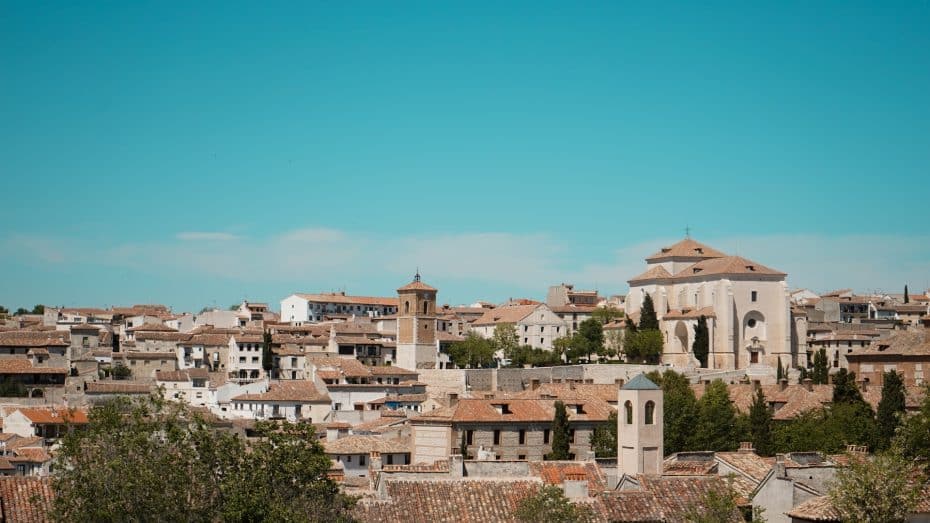
Chinchón’s is home to attractions like the impressive Plaza Mayor, a 15th-century square surrounded by wooden balconied buildings. Moreover, the Church of Nuestra Señora de la Asunción houses famous artwork such as Francisco Goya’s painting ‘La Asunción de la Virgen.’
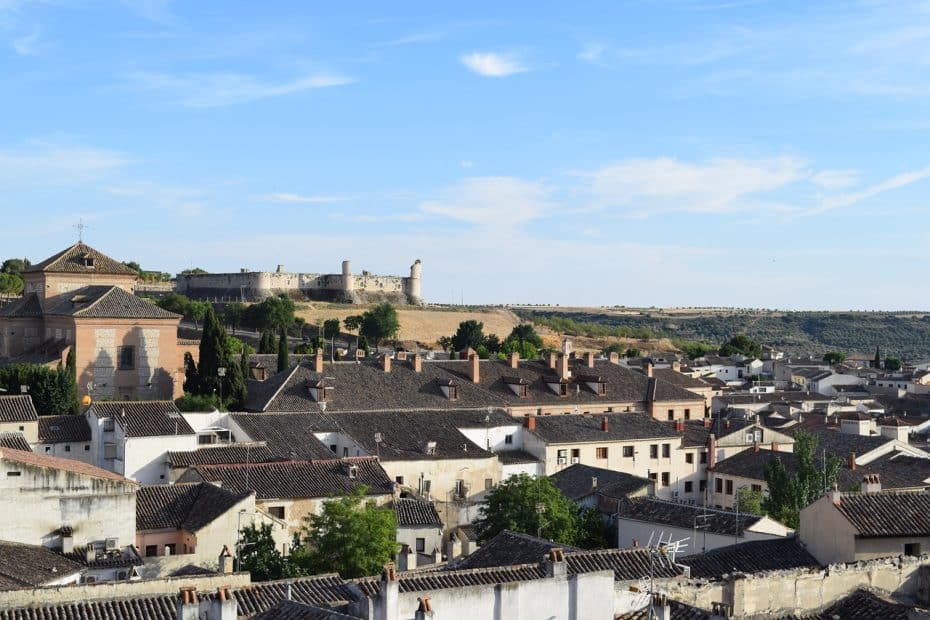
Bus line 337 from Conde de Casal in Madrid offers a direct connection to Chinchón.
In case you missed it…
14. Cádiz
Andalusia
Cádiz is one of Western Europe’s oldest continuously inhabited cities. Its origins date back to 1100 BC when it was founded by the Phoenicians as a small settlement called Gadir. The city wall, built during the 16th century, has been well preserved and plays an essential role in maintaining Cádiz’s historical charm. The fortified enclosure comprises several gates, such as Puerta de Tierra and Puerta de Sevilla, providing access to different areas of the city. Moreover, its stretches and lookouts, like Baluarte de Candelaria and Baluarte de San Roque, offer stunning views of the surrounding bay.
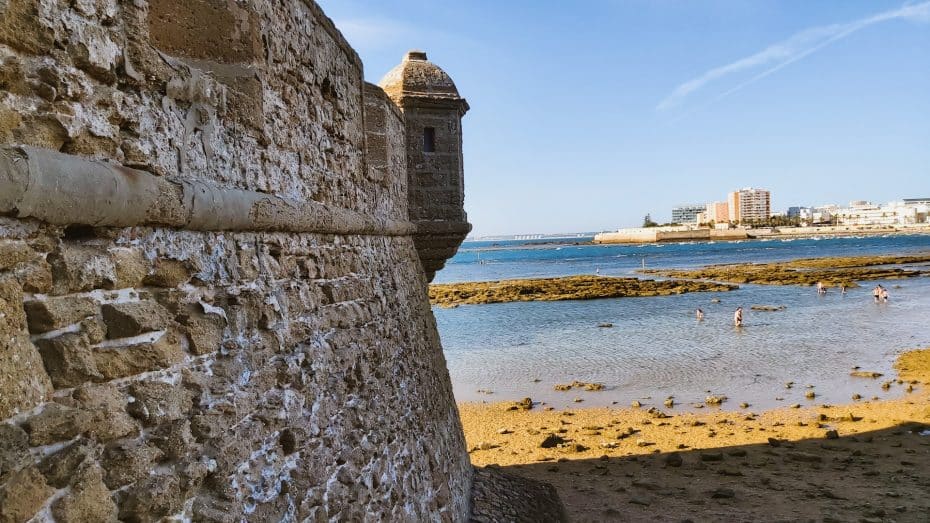
Cádiz gained prominence in the 18th century as a hub for trade and commerce with America. Consequently, many elegant buildings from this period still stand today. Notable structures include the Cathedral of Cádiz, an impressive neoclassical church completed in 1838 by architect Juan Daura, and Gran Teatro Falla, a red-bricked Moorish-style theater inaugurated in 1901. Apart from its historical sites, visitors are drawn to Cádiz’s beautiful beaches, such as La Caleta and Playa de la Victoria. Additionally, events like the Carnival of Cádiz and other music festivals bring a lively atmosphere to the city each year.
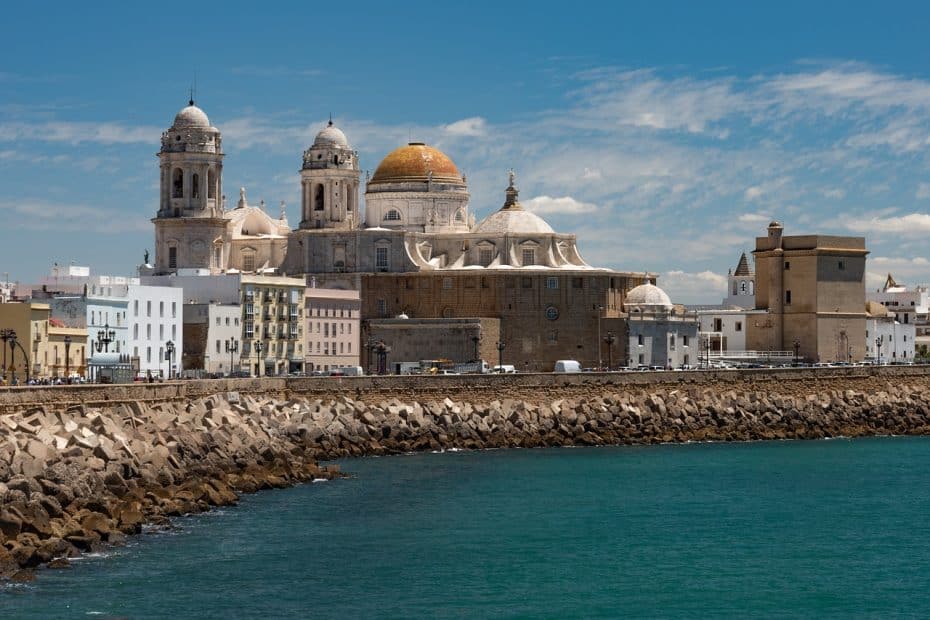
Trains operated by Renfe connect the city with major destinations, including Madrid, Seville, and Barcelona.
In case you missed it…
15. Toledo
Castilla-La Mancha
Toledo, the capital of the Castilla-La Mancha region, is well-regarded for its impressive fortified walls. With origins dating back to Roman times, approximately 192 CE, the city wall has undergone numerous modifications and expansions by various ruling empires such as Visigoths, Moors, and Christians. Today, visitors can marvel at its exquisite preservation, which includes stretches of the ancient wall encompassing the entire old city. Key features of these magnificent fortifications include eight gates – such as the Puerta de Alcántara and Puerta de Bisagra – as well as several lookout towers and keeps that provide stunning views of the surrounding landscape.
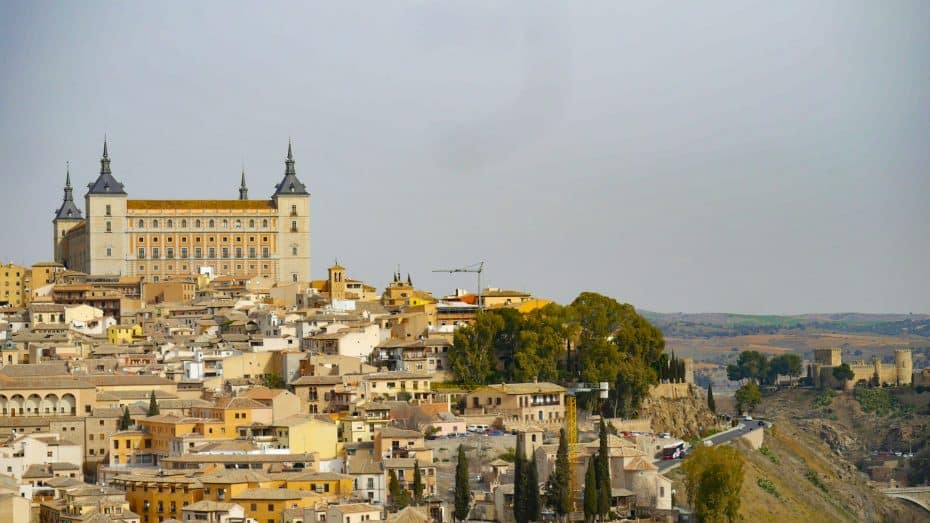
Beyond its famed city walls, Toledo boasts a rich cultural heritage, earning it the title “City of Three Cultures.” This is due to the relatively harmonious coexistence of Christians, Moors, and Jews reflected in its architecture and historical sites. Some noteworthy attractions include the Cathedral of Toledo, completed in 1493 and considered one of Spain’s finest examples of Gothic architecture; the Alcázar fortress, an imposing structure atop the highest point in Toledo; and El Greco Museum, which celebrates the life and works of renowned Renaissance painter Domenikos Theotocopoulos (El Greco). A visit to Toledo offers an unparalleled opportunity to explore Toledo’s fascinating historical background.
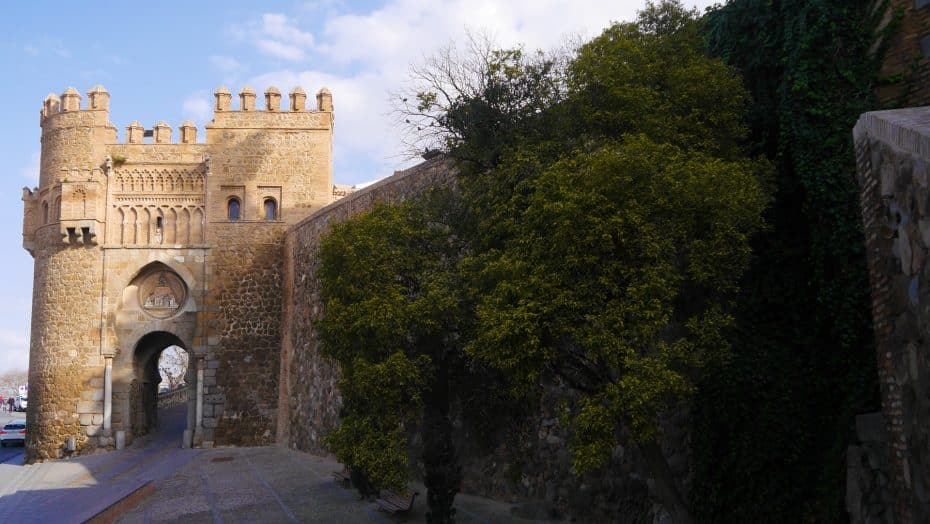
Reaching Toledo from Madrid is remarkably convenient via high-speed trains. Avant services connect Madrid’s Atocha Railway Station with Toledo in just 30 minutes.
Toledo’s surroundings are perfect for ecotourism.
In case you missed it…
16. Sepúlveda
Segovia, Castilla y León
Located in the province of Segovia, Sepúlveda is an ancient settlement celebrated for its well-preserved medieval city walls. The origins of Sepúlveda can be traced back to pre-Roman times when the Arevaci originally inhabited it. Throughout history, several protection systems were employed in the town’s walls, with noteworthy structures such as the Puerta del Azogue and the Puerta de la Fuerza gates, along with seven logically positioned lookout points.
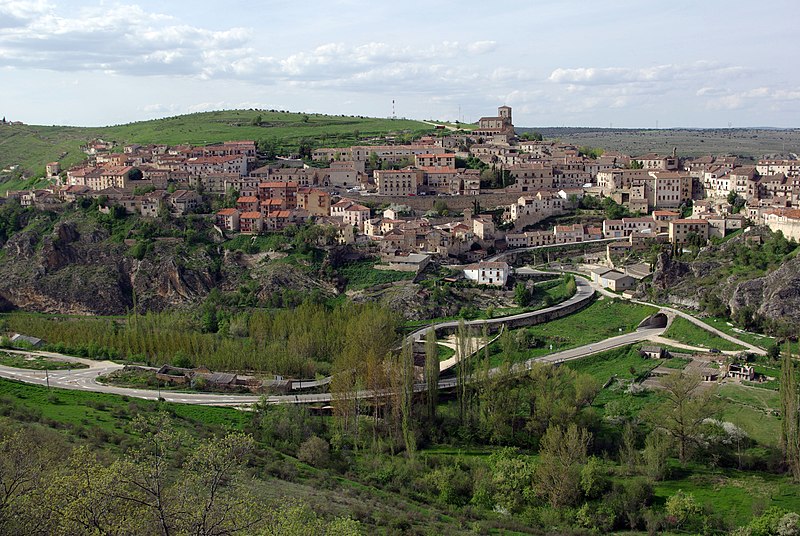
Sepúlveda is renowned for its numerous historical sites, such as the Iglesia of El Salvador, a stunning Romanesque-style church built between the 11th and 12th centuries, Casa del Moro, and the Church of San Juan, as well as a beautiful main, Plaza Mayor. Beyond these attractions, visitors have good reason to explore Sepúlveda further as it provides a gateway to Hoces del Río Duratón Natural Park.
In case you missed it…
17. Cuenca
Castilla-La Mancha
Cuenca is an incredibly picturesque city located in the autonomous community of Castilla-La Mancha. The origins of this town trace back to the Muslim period in the 8th century. Cuenca’s city wall is a key feature of its historical legacy and has been preserved in various segments throughout town. Some noteworthy sections include stretches near the San Pedro and Mangana gates and portions around the Barrio del Castillo neighborhood. The walls encompass lookouts and several points of interest, such as the Alfonso VIII Tower, offering visitors an insight into the town’s medieval past.
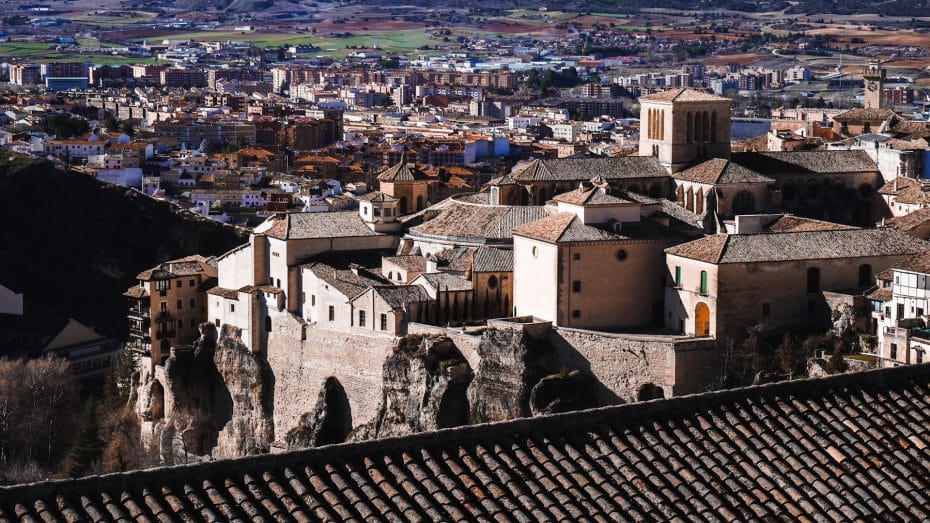
Cuenca is famous for its stunning architecture, particularly its iconic Hanging Houses or “Casas Colgadas,” which date from the 14th century. Another notable attraction built around the same time as the city walls is Cuenca Cathedral, a striking example of Gothic architecture first completed in 1257. The picturesque cobblestone streets and well-preserved medieval structures make Cuenca an attractive destination for history and architecture enthusiasts.
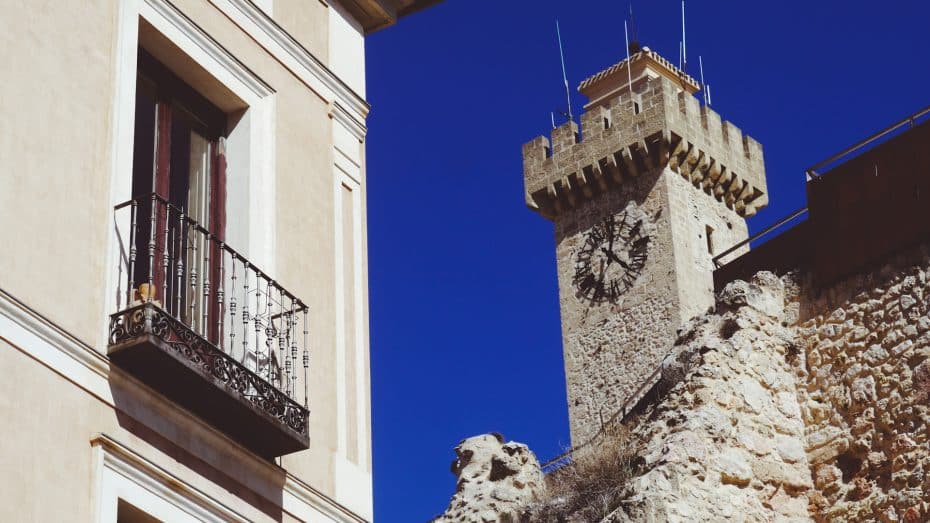
Accessing Cuenca via public transportation is straightforward thanks to high-speed trains connecting Madrid with Cuenca Fernando Zóbel railway station in approximately one hour. Regional trains also run between Cuenca and other destinations in Spain, including Valencia and Albacete.
In case you missed it…
18. Pals
Girona, Catalonia
Located in Catalonia, Pals is a well-preserved medieval town known for its stunning walls. The walls were originally built in the 12th century, with significant restoration work in the 1940s and 1970s. Today, the walls feature four imposing towers: Torre de les Hores, Torre Romana, Torre de Can Malató, and Torre de Can Llovet. The town gates, including Porta Romica, remain intact.
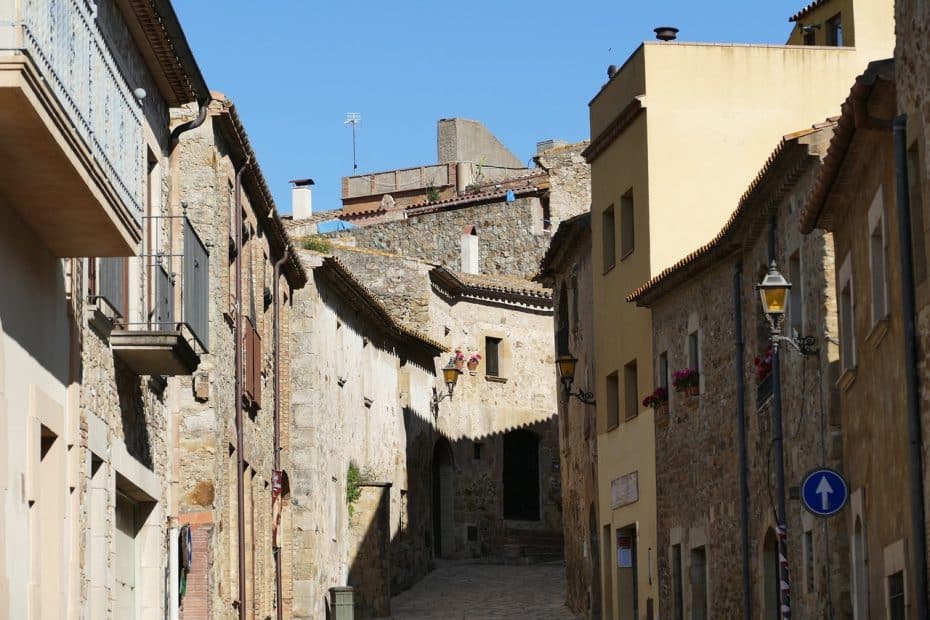
Pals is renowned for its gothic architecture and well-preserved buildings dating back to the time of its protective walls. Among these are the Esglèsia de Sant Pere, Plaça Mayor, and the Pals Archaeological Museum, which houses numerous artifacts revealing insights into Pals’ history.
You can get to Pals via bus from Girona and Barcelona.
In case you missed it…
19. Alcalá de Henares
Community of Madrid
Located in the province of Madrid, Alcalá de Henares is a historic city with origins dating back to the Roman period. Its rich history is evidenced by the preserved ancient Roman walls that surround the historic town center. These walls were built in the late 1st century CE and have undergone several restorations in subsequent centuries. Noteworthy features of these walls include their impressive towers, gates such as Puerta de Madrid and Puerta de Martos, and the well-preserved stretches showcasing various construction materials and techniques from different periods.
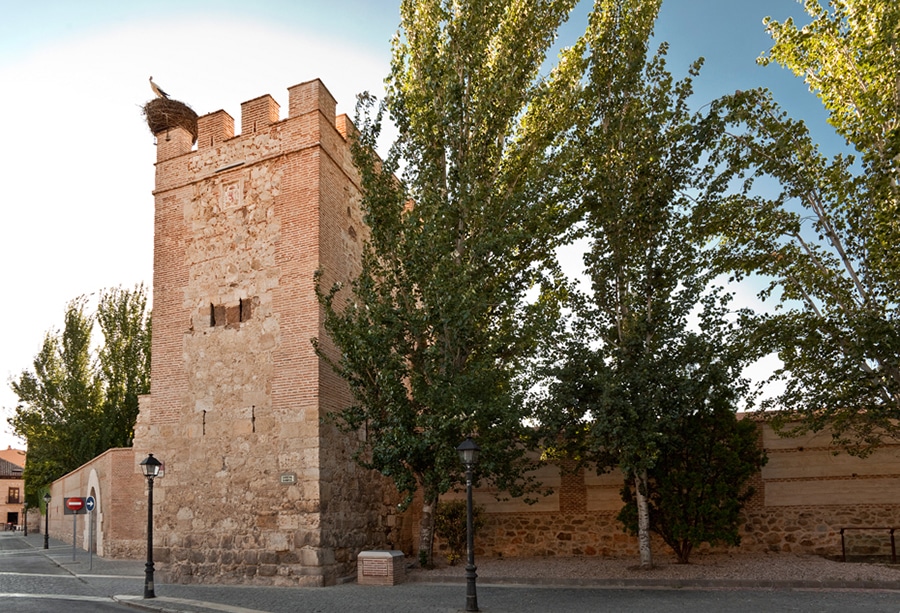
Alcalá de Henares is famous as the birthplace of Miguel de Cervantes, the renowned author of Don Quixote. This connection to one of literature’s most influential figures has contributed to the city’s recognition as a UNESCO World Heritage Site. Other notable attractions include the Archbishop’s Palace, built in the 13th century and expanded through the 19th century, featuring Gothic, Plateresque, and Herrerian architectural styles. Another highlight is Calle Mayor, a typical medieval street whose arcades date back to the 17th century.
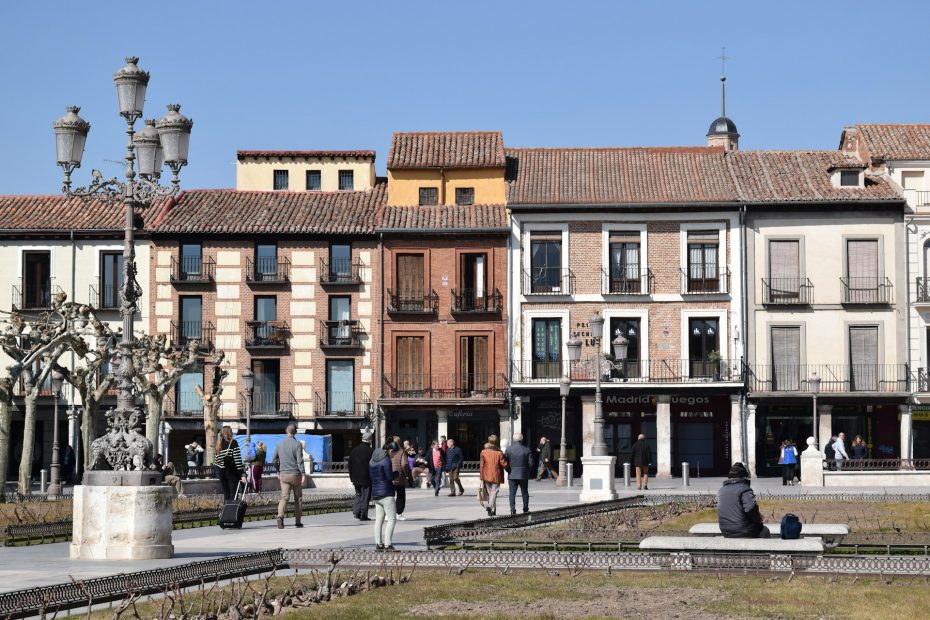
Reaching Alcalá de Henares is relatively simple; it can be accessed by commuter train from Madrid. Cercanías C-2 and C-7 lines connect Madrid’s Atocha Station to Alcalá de Henares Railway Station in approximately 45 minutes. Alternatively, buses are available from Estación Sur in Madrid to Alcalá de Henares Bus Station, with travel times ranging from approximately 30 to 60 minutes depending on traffic conditions.
In case you missed it…
20. Ciutadella de Menorca
Menorca, Balearic Islands
Ciutadella de Menorca, located on the western end of Menorca island, is known for its well-preserved city wall that dates back to medieval times. Originally founded by the Carthaginians and later occupied by the Moors, the town was taken over by Alfonso III of Aragon in 1287, who ordered the construction of a walled enclosure to protect it from potential invaders. The wall has been restored and expanded throughout the centuries, with notable features such as gates like Portal de Sant Roc and Portal de Sa Font and bastions. Today, this historic wall remains practically intact as an emblematic part of Ciutadella’s landscape.
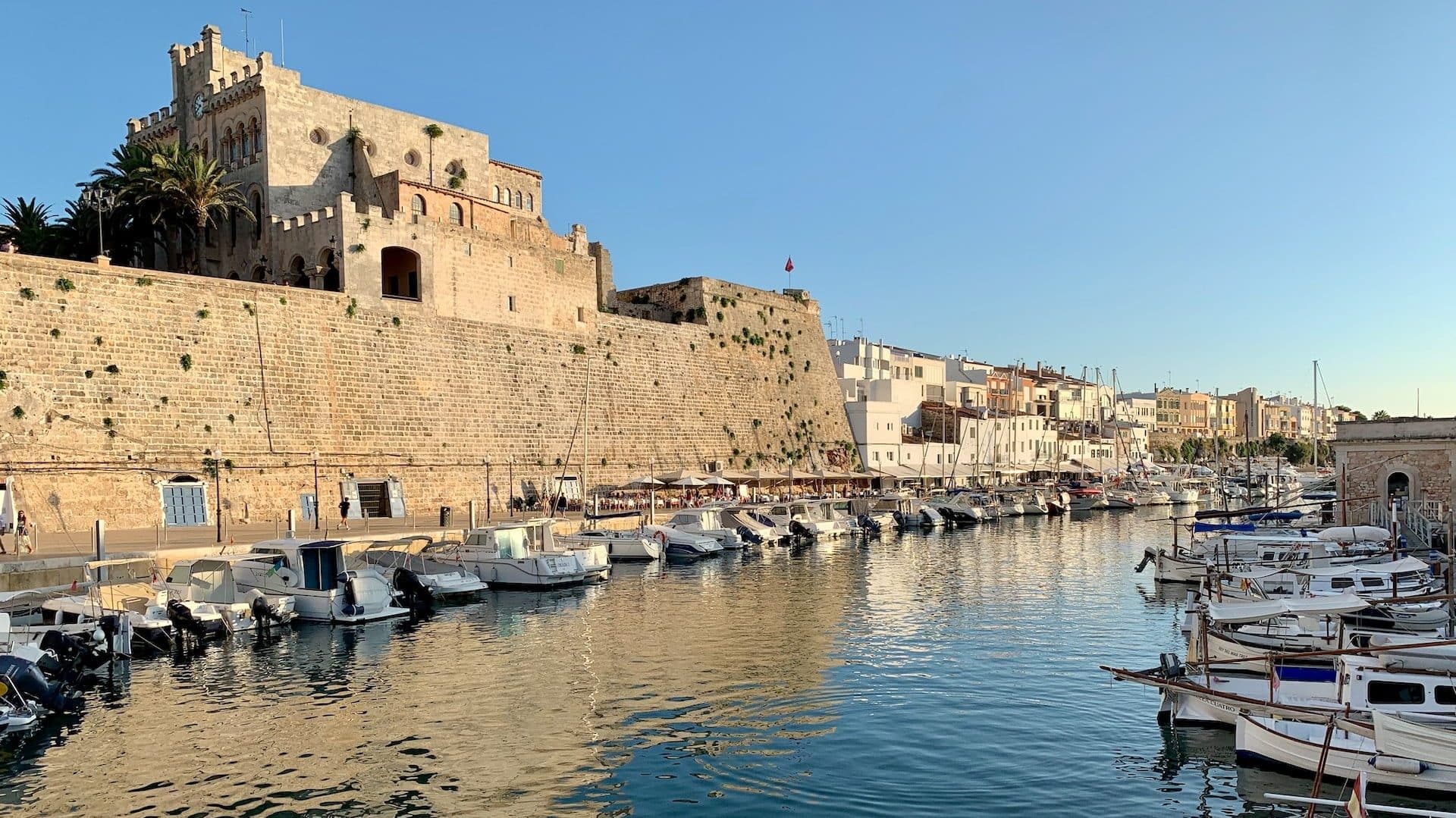
The town of Ciutadella also boasts various other historical attractions. The majestic 14th-century Gothic-style Cathedral of Menorca showcases its resilience amidst multiple reconstructions and restorations due to wars and incessant pirate attacks. Other noteworthy sites include the Plaça des Born with its impressive 19th-century obelisk commemorating the 1558 Turkish assault and numerous Baroque and Renaissance-era palaces dotting the winding cobblestone streets.
Find cheap flights to Menorca.
21. Montblanc
Tarragona, Catalonia
Montblanc, a small town in Tarragona, Catalonia, is home to one of Spain’s best-preserved medieval city walls. This historic wall dates back to the 14th century when King James II of Aragon granted permission for its construction. Spanning over 1.5 kilometers in circumference, the city wall boasts 30 towers and four main entrances: Portal del Canonge, Portal de Llastres, Portal de Santa Maria, and Portal de Sant Jordi.
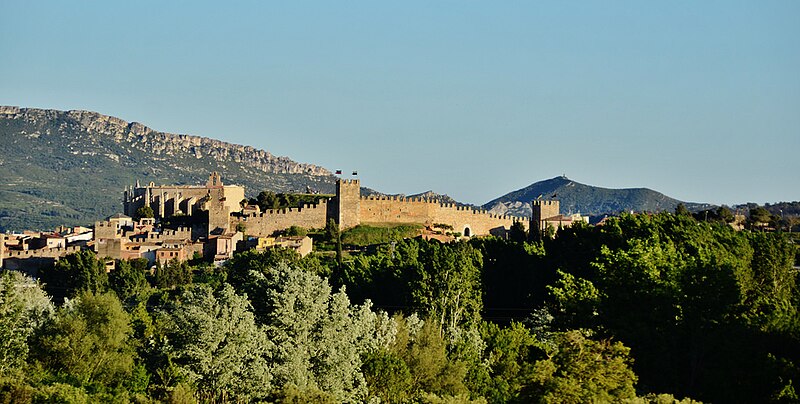
The medieval history of Montblanc goes beyond just its city wall; many other attractions in this ancient town are worth exploring. Some notable sites include Santa Maria la Major Church, built between the 14th and 17th centuries and featuring stunning Gothic architecture, and Sant Miquel Church, with its beautiful bell tower. Montblanc is also known for its link to the local legend of Saint George (Sant Jordi), who supposedly slew the dragon nearby. Additionally, Montblanc hosts a Medieval Week celebrating this popular legend each April.
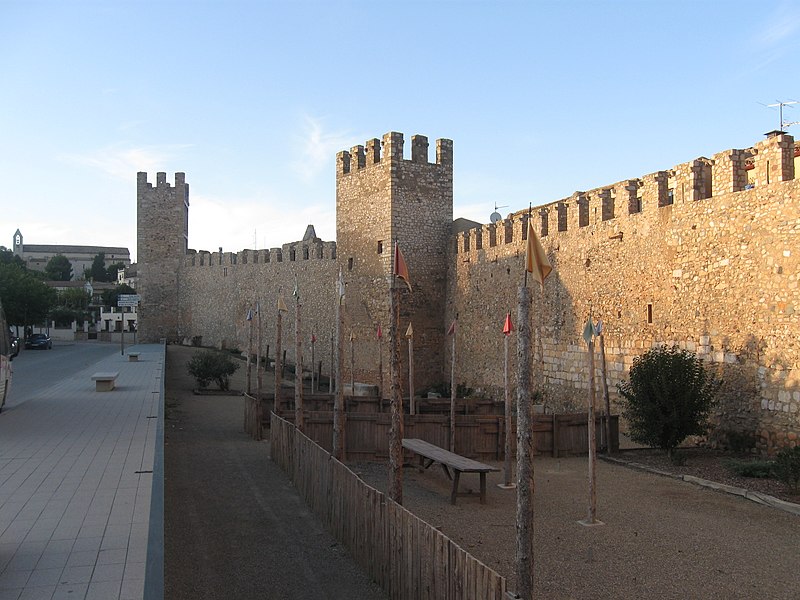
Reaching Montblanc from Barcelona, roughly 120 km (75 mi) away, is relatively straightforward via public transportation options like train or bus. Direct trains from Barcelona Sants to L’Espluga de Francolí station – about a 10-minute drive or bus ride from Montblanc.


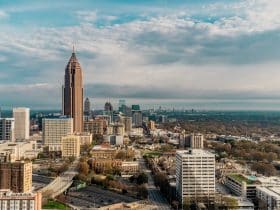


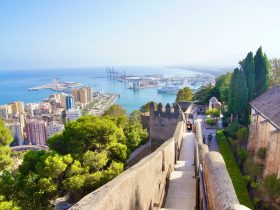
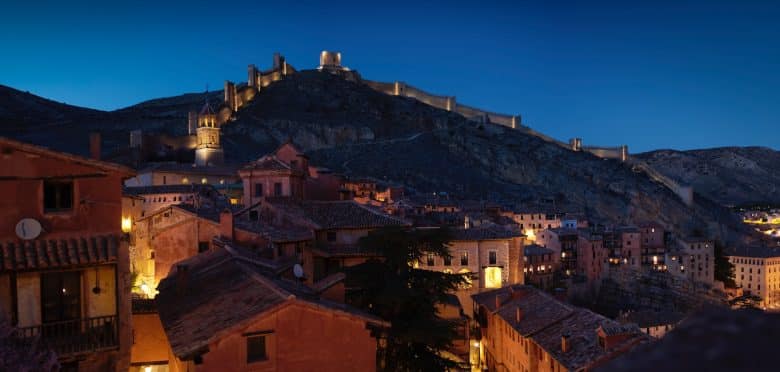
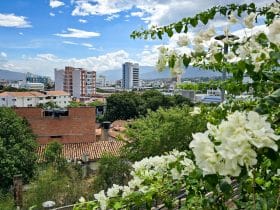
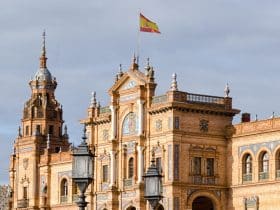











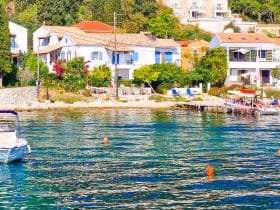
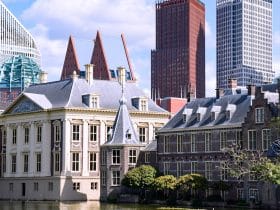

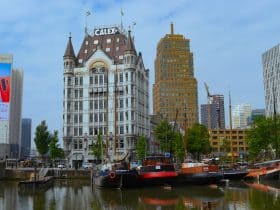
Leave a Reply
View Comments